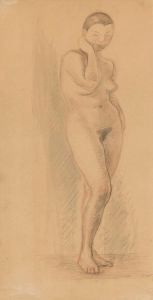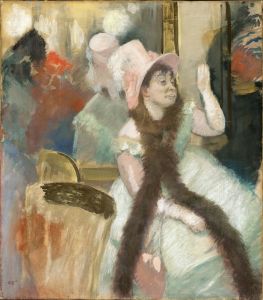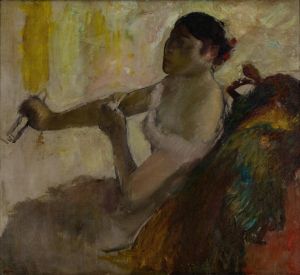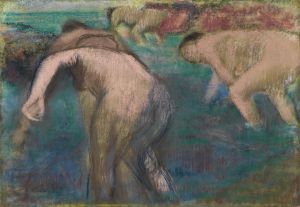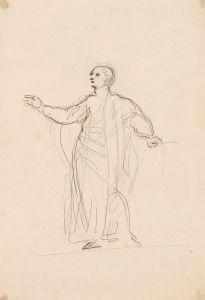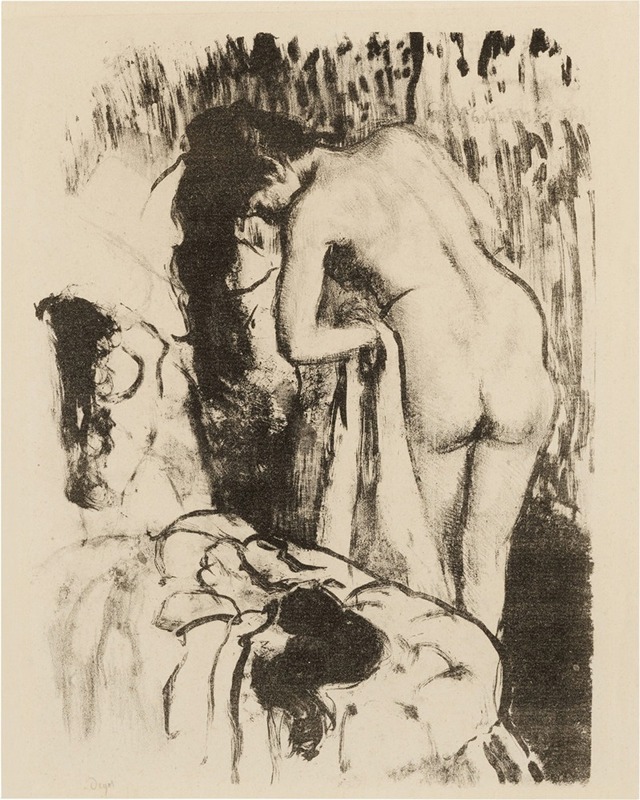
Femme nue debout à sa toilette
A hand-painted replica of Edgar Degas’s masterpiece Femme nue debout à sa toilette, meticulously crafted by professional artists to capture the true essence of the original. Each piece is created with museum-quality canvas and rare mineral pigments, carefully painted by experienced artists with delicate brushstrokes and rich, layered colors to perfectly recreate the texture of the original artwork. Unlike machine-printed reproductions, this hand-painted version brings the painting to life, infused with the artist’s emotions and skill in every stroke. Whether for personal collection or home decoration, it instantly elevates the artistic atmosphere of any space.
Edgar Degas, a prominent French artist associated with the Impressionist movement, is renowned for his innovative approach to painting, sculpture, and drawing. One of his notable works, "Femme nue debout à sa toilette" (translated as "Nude Woman Standing at Her Toilet"), exemplifies his fascination with the human form and his skillful depiction of intimate, everyday moments.
Created in the late 19th century, this artwork reflects Degas's interest in capturing the private and candid moments of women, a theme prevalent in much of his oeuvre. Degas often explored the routines and rituals of women, particularly focusing on their grooming and bathing practices. This painting is a testament to his ability to portray these scenes with a sense of realism and immediacy, while also imbuing them with a certain degree of intimacy and introspection.
"Femme nue debout à sa toilette" depicts a nude woman engaged in her toilette, a term referring to the act of washing and dressing. The composition is characterized by Degas's typical use of unusual perspectives and cropping, which were influenced by his interest in photography and Japanese prints. These elements contribute to the sense of spontaneity and movement within the scene, as if the viewer is catching a fleeting glimpse of a private moment.
Degas's technique in this painting showcases his mastery of the human anatomy and his ability to convey the subtleties of light and shadow. The woman's form is rendered with a delicate balance of line and color, highlighting the contours and textures of her skin. Degas often employed pastels in his works, a medium that allowed him to achieve a soft, luminous quality, and it is likely that he used this technique in "Femme nue debout à sa toilette" to enhance the tactile and visual richness of the scene.
The setting of the painting is minimalistic, focusing the viewer's attention on the figure of the woman. This approach is consistent with Degas's tendency to strip away extraneous details, thereby emphasizing the subject's form and the act of her toilette. The simplicity of the background serves to accentuate the intimacy of the moment, drawing the viewer into the woman's private world.
Degas's portrayal of women has been the subject of much discussion and analysis. While some critics have viewed his depictions as voyeuristic, others argue that his work offers a nuanced exploration of femininity and the complexities of the female experience. "Femme nue debout à sa toilette" can be seen as part of this broader dialogue, inviting viewers to consider the intersection of art, privacy, and the representation of women.
Throughout his career, Degas remained committed to exploring new techniques and perspectives, continually pushing the boundaries of traditional art forms. His work, including "Femme nue debout à sa toilette," continues to be celebrated for its innovative approach and its ability to capture the essence of human experience with sensitivity and insight. This painting, like many of Degas's works, offers a window into the artist's unique vision and his enduring legacy in the world of art.








